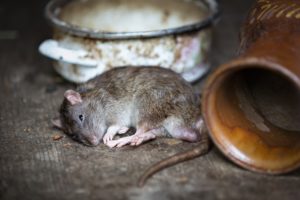
Join us as we travel back through 2022 and rediscover some of our more unexpected lessons from the world of parasites and their vectors….
The real price of gold
 Between 2012 and 2018 there were over 44,000 reported cases of malaria in Colombia’s gold mining community, showing the unexpected cost and dangers of gold mining. Read more in Karina Mondragon-Shem’s blog from January 2022.
Between 2012 and 2018 there were over 44,000 reported cases of malaria in Colombia’s gold mining community, showing the unexpected cost and dangers of gold mining. Read more in Karina Mondragon-Shem’s blog from January 2022.
Moving into the light can be better for… some flies
 The fruit fly Drosophila nigrospiracula lives in the Sonoran desert (feeding on cacti) and is less likely to be infested with ectoparasites if it is in the light. Find out more in Hilary Hurd’s blog Being afraid of the dark may be useful.
The fruit fly Drosophila nigrospiracula lives in the Sonoran desert (feeding on cacti) and is less likely to be infested with ectoparasites if it is in the light. Find out more in Hilary Hurd’s blog Being afraid of the dark may be useful.
The sweet smell of success…for a virus at least
 Flaviviruses such as Zika virus and the Dengue virus can make you produce Acetophenone, a compound that attracts Aedes mosquitoes – making it more likely that you will be bitten and hence the virus transmitted. Krisztian Magori’s July blog explains more.
Flaviviruses such as Zika virus and the Dengue virus can make you produce Acetophenone, a compound that attracts Aedes mosquitoes – making it more likely that you will be bitten and hence the virus transmitted. Krisztian Magori’s July blog explains more.
Parasites like surfing the waves…on plastic waste
 Toxoplasma gondii, Cryptosporidium parvum, and Giardia enterica were shown to be able to attach to plastic microfibers and microbeads in seawater. They can survive in oceanic environments for a long time, can be ingested by marine organisms and potentially be spread to wider geographic regions via the ocean. Daniel Parsons highlights this in his blog Terrestrial pathogens and microplastics: Hitchhiker’s guide to the ocean
Toxoplasma gondii, Cryptosporidium parvum, and Giardia enterica were shown to be able to attach to plastic microfibers and microbeads in seawater. They can survive in oceanic environments for a long time, can be ingested by marine organisms and potentially be spread to wider geographic regions via the ocean. Daniel Parsons highlights this in his blog Terrestrial pathogens and microplastics: Hitchhiker’s guide to the ocean
Holy helminths!
 Burial remains show that despite having better hygiene practices, sanitary infrastructure, nutrition and life expectancies, Augustian friars were more likely to have helminth infections than ordinary ‘townfolk’. As discussed in Anouk Gouvras’ August blog, this could be due to their use of human and animal waste to fertilise crops in monastery gardens.
Burial remains show that despite having better hygiene practices, sanitary infrastructure, nutrition and life expectancies, Augustian friars were more likely to have helminth infections than ordinary ‘townfolk’. As discussed in Anouk Gouvras’ August blog, this could be due to their use of human and animal waste to fertilise crops in monastery gardens.
Pandemics are nothing new…
 ….but we can use new technology to discover more about historical plague events AND use that knowledge to help us plan for current and future pandemics. In her blog, A new understanding of old pandemics, Hilary Hurd discusses the use of genomic analyses of remains of medieval plague vectors to study how waves of Old-World plague pandemics spread.
….but we can use new technology to discover more about historical plague events AND use that knowledge to help us plan for current and future pandemics. In her blog, A new understanding of old pandemics, Hilary Hurd discusses the use of genomic analyses of remains of medieval plague vectors to study how waves of Old-World plague pandemics spread.
*all images are from Pixabay and free to use under their license.

Comments